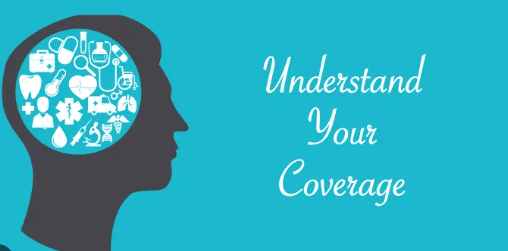Insurance coverage refers to the extent of protection provided by an insurance policy. It outlines the specific risks and perils that are covered by the policy, as well as the limits, deductibles, and conditions that apply. Understanding insurance coverage is important because it helps individuals and businesses assess the level of financial protection
they have against potential risks and losses. Here are some key concepts related to insurance coverage: Policy: An insurance policy is a contract between the insurer (the insurance company) and the policyholder (the insured). It outlines the terms and conditions of the coverage, including the specific risks covered, the coverage limits, and the premiums to be paid. Coverage Types: Insurance policies can cover various aspects, such as auto, home, health, life,
business, and more. Each type of insurance has its own set of coverage options and requirements. For example, auto insurance can include coverage for property damage, liability, medical expenses, and more. Perils and Risks: Insurance coverage typically specifies the perils or risks that are covered. For example, in homeowners insurance, common perils covered may include fire, theft, or windstorm damage. It’s important to review the policy to
understand which risks are covered and which ones are excluded. Coverage Limits: Insurance policies have limits that indicate the maximum amount the insurer will pay for a covered claim. These limits can be set per occurrence, per year, or per policy term. For example, an auto insurance policy may have a $50,000 limit for property damage coverage. Deductibles: A deductible is the amount the policyholder must pay out of pocket before the insurance
coverage kicks in. For example, if you have a $500 deductible on your auto insurance and file a claim for $3,000 in damages, you would pay the first $500, and the insurance company would cover the remaining $2,500. Exclusions: Insurance policies may have exclusions, which are specific situations, events, or conditions that are not covered. It’s important to carefully review the policy to understand what is excluded from coverage. Policy Terms: Insurance coverage is typically provided for a specific period, known as the policy term. The policyholder needs to renew the
coverage periodically by paying the premiums to maintain the protection. Premiums: Premiums are the payments made by the policyholder to the insurance company to maintain coverage. Premiums can be paid monthly, quarterly, annually, or as agreed upon in the policy. The cost of premiums is influenced by factors such as the type of coverage, coverage limits, deductibles, and the policyholder’s risk profile. To fully understand your insurance coverage, it’s
crucial to read the policy documents carefully, ask questions to your insurance agent or company representative, and seek clarification on any terms or conditions you find confusing.
rtainly! Here are some additional aspects to consider when understanding insurance coverage: Policy Excess: Policy excess, also known as a policy deductible, is the initial amount that policyholders are responsible for paying in the event of a claim. It is a fixed or percentage-based amount specified in the policy. For example, if you have a policy excess of $1,000 and file a claim for $5,000, you would pay the first $1,000, and the insurer would cover the
remaining $4,000. Pre-Existing Conditions: In health insurance, pre-existing conditions are medical conditions or illnesses that existed before the insurance policy was purchased. Some insurance policies may have waiting periods or exclusions for pre-existing conditions, meaning they may not be covered immediately or at all. It’s important to review the policy’s terms regarding pre-existing conditions to understand how they are handled. Renewability and
Cancellations: Insurance policies have specific terms regarding renewability and cancellations. Understanding these terms is crucial to maintaining continuous coverage. Some policies are renewable at the discretion of the insurer, while others have guaranteed renewability, meaning the insurer cannot cancel coverage as long as premiums are paid on time. Additional Coverage Options: Insurance policies often provide additional coverage options that can be
added to the base policy for an extra premium. These options, known as riders or endorsements, expand the scope of coverage to include specific risks or provide higher limits. Common examples include adding flood coverage to a homeowners policy or adding comprehensive coverage to an auto insurance policy. Geographic Coverage: Insurance
policies may have limitations on coverage based on geographic regions. For example, an auto insurance policy may cover accidents that occur within a specific country or region. If you travel abroad or move to a different location, it’s important to understand how your coverage may be affected. Claims Process: Understanding the claims process is crucial for policyholders to know what steps to take in the event of a covered loss or damage. Familiarize yourself
with the procedure for filing a claim, the required documentation, and any time limits associated with reporting claims. Policy Exclusions and Limitations: Insurance policies also contain specific exclusions and limitations that define what is not covered or where coverage may be limited. It’s essential to review these provisions carefully to understand the extent of coverage and any potential gaps. Remember that insurance policies can vary widely
depending on the insurance company, type of coverage, and specific terms and conditions. Take the time to review your policy documents, ask questions to your insurance provider, and consider seeking advice from a professional insurance agent or broker who can help you understand the nuances of your coverage.
